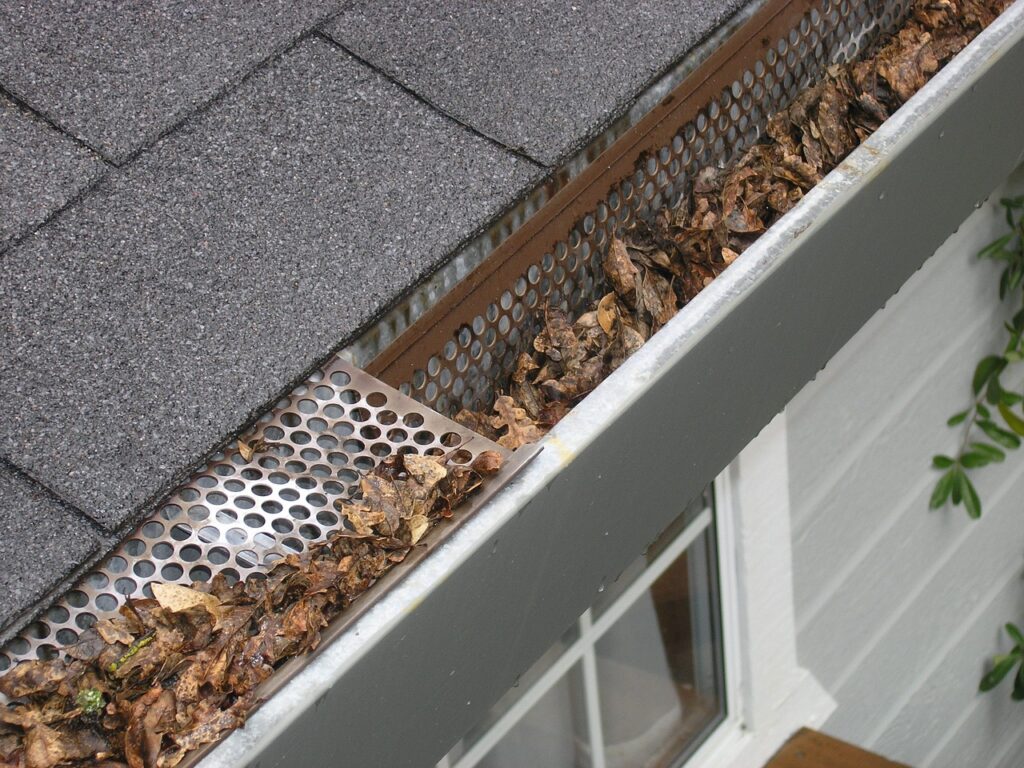
Regular gutter cleaning is more than just a chore—it’s a proactive measure to avoid potential hazards and protect your investment. Beyond the prevention of water damage, maintaining clean gutters helps preserve the structural integrity of your home. Clogged gutters can lead to sagging, overflowing, or detached gutters, which can compromise the roofline and ultimately impact the stability of your entire home. Additionally, neglected gutters become a haven for pests like mosquitoes, rodents, and birds, which can damage the gutters themselves and find their way into your living spaces.
The frequency of gutter cleaning depends on several factors, including the climate you live in, the presence of trees near your home, and the type of gutter protection system you have, if any. While general guidelines recommend cleaning gutters at least twice a year, it’s essential to consider the unique characteristics of your home and surrounding environment to determine the optimal cleaning schedule. By understanding the specific needs of your gutters, you can tailor your maintenance routine accordingly and ensure long-term functionality and performance.
In this article, we will delve into the best practices for maintaining gutters and guide how often to clean them based on industry knowledge and expert recommendations. By following these recommendations and incorporating them into your home maintenance routine, you can protect your home from water damage, preserve its structural integrity, and enjoy peace of mind knowing that your gutters are in optimal condition.
Why Clean Gutters Regularly
Preventing Water Damage
Proper water flow away from the home is essential to prevent water damage. Clean gutters ensure that rainwater is effectively channeled away from your home’s foundation, landscaping, siding, and interior areas. By removing debris and allowing water to flow freely, you reduce the risk of foundation cracks, erosion of landscaping, water seepage into basements or crawlspaces, and damage to the siding and interior of your home.
Avoiding Structural Issues
Clogged gutters can lead to a range of structural problems that compromise the integrity of your home. When gutters are blocked, water overflows and can infiltrate the roofline, causing damage to fascia boards, soffits, and even the roof itself. Over time, this can result in sagging, overflowing, or detached gutters, which jeopardize the stability of your home. Regular gutter cleaning helps prevent the accumulation of debris that can lead to these issues, ensuring that your gutters can effectively carry water away from your home.
Pest Prevention
Clogged gutters create an inviting environment for pests like mosquitoes, rodents, and birds. Stagnant water in blocked gutters becomes a breeding ground for mosquitoes, while debris-filled gutters provide nesting opportunities for rodents and birds. These pests can infiltrate your home, causing damage and creating unsanitary conditions. By maintaining clean gutters, you discourage pests from making your gutters their home, helping to maintain a pest-free environment inside your house.
Enhancing Curb Appeal
Well-maintained gutters contribute to the overall aesthetics of your home, enhancing its curb appeal and value. Clean gutters not only function properly but also create a polished and well-cared-for appearance. On the other hand, clogged and overflowing gutters can give the impression of neglect and detract from the visual appeal of your home. By investing time in regular gutter cleaning, you improve the overall look and appeal of your property, making a positive impression on guests, neighbors, and potential buyers.
How Often to Clean Gutters
The frequency at which you should clean your gutters depends on several factors that can vary from home to home. By considering these factors, you can determine the optimal cleaning schedule for your gutters. Here are the key factors to consider:
Climate and Foliage
Living in areas with heavy foliage, numerous trees, or frequent rainfall often requires more frequent gutter cleaning. Falling leaves, branches, and other debris can quickly accumulate in your gutters, leading to clogs and potential water damage. In such areas, it is advisable to clean your gutters every two to three months to efficiently remove leaves and debris, especially during the fall season. Additionally, if you have pine trees on your property, they tend to shed needles year-round, necessitating more frequent inspections and cleaning, potentially every three months.
Gutter Protection Systems
If you have installed gutter guards or screens, they can help reduce the amount of debris that enters your gutters. While gutter guards can be effective in keeping larger pieces of debris out, smaller amounts may still find their way into the gutters. Therefore, even with gutter protection systems in place, periodic cleaning is still necessary to ensure optimal gutter performance. Typically, gutter systems with guards or screens require cleaning at least once or twice a year. However, the specific cleaning frequency may vary depending on other factors, such as the surrounding foliage and climate conditions.
Seasonal Weather Cycles
Seasonal weather patterns play a significant role in determining how often you should clean your gutters. Certain weather conditions can increase the need for more frequent gutter maintenance. For example, areas with heavy snowfall or ice accumulation may require more regular cleaning to prevent ice dams and water backup. Similarly, regions with frequent heavy rainstorms may necessitate more frequent gutter cleaning to ensure proper water flow and prevent overflow. It is important to stay aware of the weather forecast and be proactive in gutter maintenance during periods of severe weather.
Home-Specific Factors
Several home-specific factors can influence the recommended frequency of gutter cleaning:
- Number of Trees: The number of trees near your home can impact the amount of debris that falls into your gutters. If you have many trees in close proximity, you may need to clean your gutters more frequently.
- Type of Roof: The type of roof you have can also affect gutter cleaning frequency. For instance, roofs with shingles may shed granules or small fragments that can find their way into the gutters, requiring more frequent cleaning compared to roofs with other materials.
- The Architecture of Your Home: The architectural design of your home can impact how debris accumulates in your gutters. Houses with complex rooflines, corners, and eaves may require more frequent cleaning as debris accumulates in these areas.
Considering these home-specific factors alongside climate, foliage, and gutter protection systems will help you determine the optimal frequency for cleaning your gutters.
How Often to Clean Gutters with Gutter Guards
Gutter guards or screens are designed to reduce debris accumulation in gutters and minimize the frequency of cleanings. While these systems can be effective in keeping larger debris out of the gutters, they still require some level of maintenance. Here’s what you need to know about cleaning gutters with gutter guards:
Annual Cleaning
Gutters equipped with gutter guards generally require an annual cleaning to ensure their optimal performance. Although the guards prevent larger debris from entering the gutters, smaller particles like dirt, dust, and tiny organic matter may still find their way onto the guards’ surface. Over time, this debris can accumulate and form a thin layer on top of the guards, potentially obstructing water flow. Therefore, it is recommended to perform an annual cleaning to remove any debris that may have accumulated on the gutter guards.
During the annual cleaning, you can remove the gutter guards and clean them using a garden hose or by gently brushing off the debris. This process will help maintain the effectiveness of the gutter guards and ensure proper water flow.
Visual Inspections
In addition to annual cleanings, conducting regular visual inspections of your gutter guards is essential to ensure they are functioning effectively. Visual inspections can be performed more frequently, such as every few months, to assess the condition of the guards and identify any potential issues.
During these inspections, carefully examine the gutter guards for signs of blockages or debris buildup. Check if the guards are securely attached and free from any damage or corrosion. If you notice any blockages or damage, take the necessary steps to address the issue promptly. Clearing minor blockages and making any required repairs can help maintain the proper functioning of the gutter guards and prevent potential water overflow or damage.
By incorporating visual inspections into your gutter maintenance routine, you can catch any problems early on and ensure that the gutter guards are effectively protecting your gutters from debris accumulation.
Remember, even with gutter guards in place, it is still important to remain vigilant and proactive in maintaining your gutters. While gutter guards significantly reduce the need for frequent cleanings, they do not eliminate the need for some level of maintenance. By performing annual cleanings and conducting regular visual inspections, you can keep your gutters with gutter guards in optimal condition and minimize the risk of clogs or water damage.
Read more on how to clean gutter guards.
Conclusion: The Importance of Regularly Cleaning Gutters
Regular gutter cleaning is a crucial aspect of home maintenance that should not be overlooked. By maintaining clean gutters, you can protect your home from water damage, structural issues, and pest infestations, and enhance its overall curb appeal.
Last Updated on June 1, 2023

Dustin Hopkins has over 12 years in the cleaning industry, working in the past for one of the top 5 cleaning companies in the US. Currently, he is the chief editor of CleaningRank.com and the proud father of a 5-year-old, Chris.
